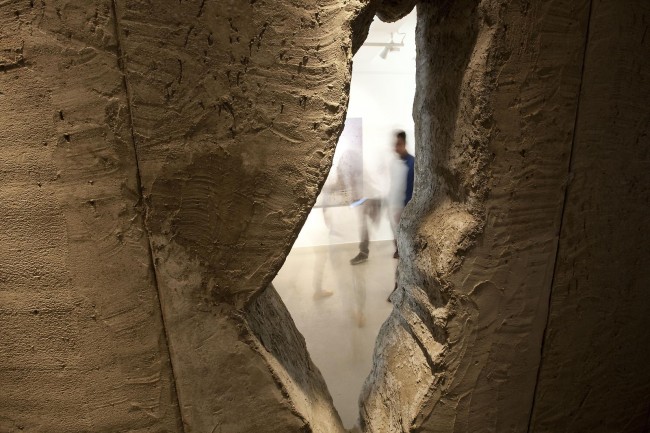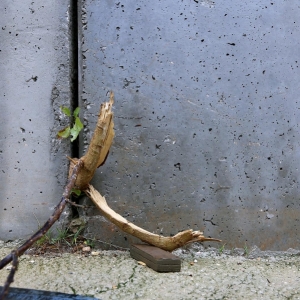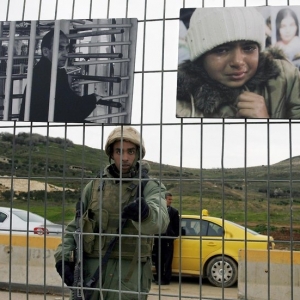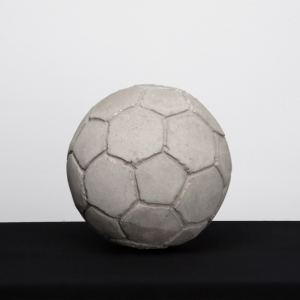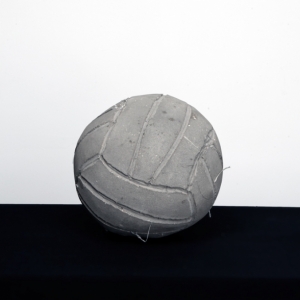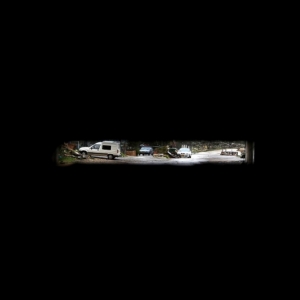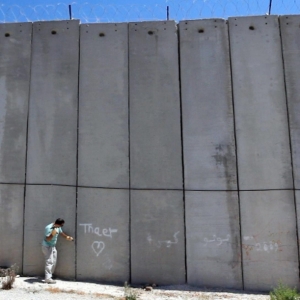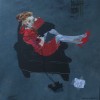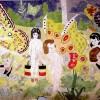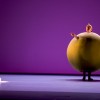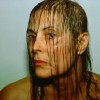Justice is indivisible, and injustice anywhere is a threat to justice everywhere –
Martin Luther King Jr.
There are no doubts regarding the fact that the continuous measures applied by Israel’s policies to the Palestinian people are a crime and in a complete violation of the international law. Whole in the Wall not only discloses the impact of the Apartheid Wall in the quotidian, but also is a stark reminder of on-going exposure to segregation, discrimination and oppression unto Palestinian individuals. The Apartheid Wall or Separation Wall, as the Israelis call it, started to be built in the West Bank in 2002 and was justified ‘to prevent them from continuing to murder us’. But the wall’s route extends itself inside the so-called “Green Line”, deep into OPTs, snaking through backyards, towns, and stealing natural resources, while furthermore displacing and segregating communities and families from one another. A wall that is still in construction (against The International Court for Justice’ orders), keeps being used as an excuse to illegally confiscate Palestinian land.
Khaled Jarrar confrontation to this all-concrete wall, and the first impact that the audience has while entering it, is an imposing 2.5 metres high site-specific installation of a concrete wall that divides longitudinally the gallery, shows us what the impact of such structure would be in our daily lives. This installation, as well as most of the artworks exhibited, is literally made from fragments from the Israeli Separation Wall, which the artist secretly chiselled from the wall near Ramallah during daylight – such action is documented in his video Concrete. By reusing these concrete wall fragments and “trafficking” them to other places or contexts, the artist hopes to elevate this symbol of oppression and humiliation to a source of unity, and provoke a critical dialogue about possession and reclamation.
In this exhibition the audience is invited to interact with by climbing through a hole in the concrete wall shaped like the Palestine Map. By rearranging the hole, we are faced with a photograph from the series Untitled, which depicts a tree that pierces between the junctions of the Apartheid Wall, and on the right a sculpture of a tree log titled Olive Tree Stump. Half of this sculpture is actually a piece of an Olive tree log and the remaining is concrete. The artist uses olive trees due to their cultural affinity with the Palestinian people – the oldest in the world is located just outside of Bethlehem – but also to shine light upon the brutal destruction of thousands of olives trees due to the Apartheid Wall’s construction. As Palestinian writer Mohammed Ali Taha said it’s “the symbol of being steadfast on the land”.
Along the exhibition’s main route, and side by side, are a short film and a series of photographs both titled “Whole in the Wall”. Both explore the existent fissures in the Apartheid Wall, showing us the panorama of the other, exposing on-going issues of restricted mobility that Palestinians encounter daily. The Wall separates thousands of Palestinians and many families are living on opposing sides, unable to visit one another. One of these families is portrayed in the video, a poignant short film where we see a mother and a daughter touching each other’s hands through a small fissure beneath the barrier; the only way they found to remain in touch.
Though Jarrar’s work keeps exposing a political agenda that is intimately aligned with the territory and its fellow citizens, the artist states that his artworks are not political; they are a factual reflection of the daily environment in which he and many others Palestinians have been surviving in. There is a Palestinian side and an Israeli side. The former is just concrete, whilst the latter is embellished. On some parts of the wall, namely Jerusalem the Israeli side is “painted with the image of the country side beyond the wall – but without the Palestinian town, depicting just nature, grass, trees… Is this not ethnic cleaning at its purest, imagining the outside beyond the walls as it should be: empty, virginal, waiting to be settled?”
In his many visits to the Wall, the artist has encountered many children that play near the wall. Inspired by a story that some Palestinian children told him about the shrinkage of their playground due to the construction of the wall, the artist was inspired to do a sculpture series based on sporting paraphernalia, that include ‘Volleyball’, ‘Ping pong’, ‘Football Shoes’, ‘Basketball’, ‘Discus Throw’, and ‘Football’, shown in this exhibition.
Another sculpture, not sports related, is Buddy Bear that is a replica of the original Buddy Bear, a toy bear with his arms up as if begging for a hug, and an international symbol for tolerance and peace among nations. The first exhibition of Buddy Bears took place in 2001 at the site of the Berlin Wall, with 140 bears each representing a United Nation’s country, and in 2007 the exhibition went to Jerusalem, where a Palestinian buddy bear stood in the same footing as all the others, an early sign of recognition of the Palestinian state, something that hasn’t been fully attained. In 2012, Palestine moved from its UN status from “observer entity” to “non-member observer state”, and very recently in April 2013, was recognized by 132 of the 193 member states of the United Nations as the State of Palestine. However none of these recognitions have had any legal repercussions, since Palestine´s territory as a geographical entity “does not exist”, remaining an ideological abstraction. There is a hint of hypocrisy in the choice of Jerusalem as the hosting city, since its holds part of the Apartheid Wall, resulting in an ironic exhibition of tolerance in an occupied city. It could be seen as an equivalent to hosting the same exhibition in Berlin when the Berlin Wall still existed.
Eventually, we may see this exhibition as non-violent resistance, or a protest against the hostile apartheid system that Israel has been developing for more than sixty years against the Palestinian people. Khaled Jarrar as a freedom fighter that uses Art as a challenging public platform to boost discussion among the dissident hegemony. This project might already been taken as a source of inspiration for young Palestinians activists in the streets of the West Bank, a true reflection of the way Art can promote change.
The newspaper Palestine New Network recently published an article showing a group of activists of the Popular Resistance allied with the help of dozens of young men, opening a substantial hole in the Apartheid Wall, big enough to allow a person to pass through. A gesture that although may seem to be insignificant when compared to the whole dimension of the wall, is meaningful and strongly symbolic. This is not only an isolated act of protest against the apartheid wall and the several settlements activities, but also the marking of the 9th anniversary of the International Court of Justice’s decision in 2004, criminalizing the Separation Wall. Israel has long been internationally criticised by its policies, and formally accused by international organizations of not respecting the International Law, but until now there have been no visible sanctions. Arab countries are invaded by the West on behalf of democracy, the authoritarian governments that neglect their people’s rights. Nevertheless where is this behaviour to be seen in the case of Israel and its policies towards the Palestinian people? Where was the international community when the Nakba took place? Rather than being sanctioned, Israel continues to be supported. Since 2006 it “has been steadily escalating its criminality: expanding settlements, launching an outrageous war against Lebanon, and imposing collective punishment on Gaza through the brutal blockade”, while continuously being supported by the US through an annual aid of 3 billion dollars plus weapons, and enjoying a “dramatic improvement in its diplomatic, cultural, and trade relations with a variety of other allies”. In the Western fight against global terrorist it is interesting to see that some of its protagonists have little capacity to self-reflect.
Within these ambiguous ethical and moral values, where money is more valuable than life, it would be meaningful to ask, what separation, destruction and notions of Otherness do to humanity.
